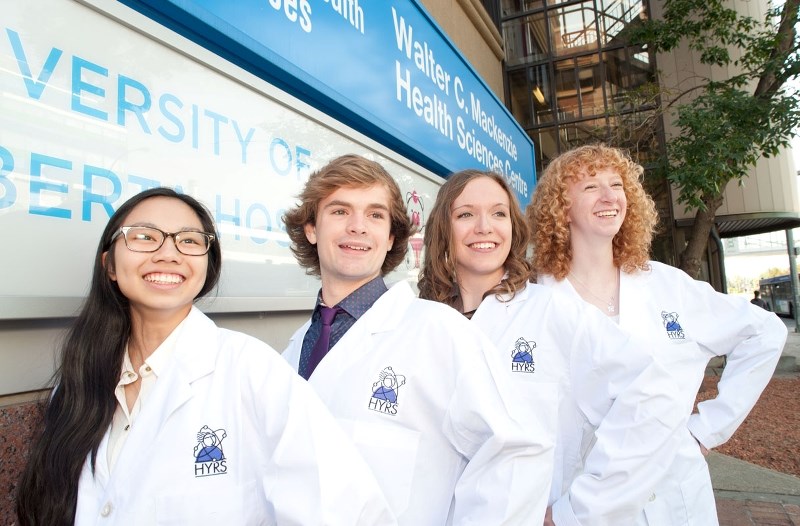Sarah Willette heads into Grade 12 this fall. She spent the summer fighting cancer … with science.
"Cancer is a very intimate subject for me," says the école Secondaire Sainte Marguerite d'Youville student – many people in her family have had it, and her father died from it six years ago.
"I've always been having these 'why' questions: why did he have it? Why didn't other people have it?"
This summer, she got to try and answer some of those questions through the province's Heritage Youth Researcher Summer program, which wrapped up on Monday. She and 50 other Grade 11 students from across the province spent six weeks at the University of Alberta, University of Calgary and University of Lethbridge doing hands-on scientific research.
The program is meant to give Grade 11 students a chance to explore careers in the health sciences, says program manager Nancy Whelan. To qualify, students need to write an essay, get letters of reference, and earn at least an 85 per cent average in math, biology and one other science course.
"These are some of the most exceptional students in Alberta," she says, and they've been doing real, paid research.
"They're not cleaning beakers or sweeping floors."
Science whizzes
Willette was one of four St. Albert students in the program this year and one of the 22 stationed at the U of A. She got to work with a team studying the gene ZIC2, which has been linked to cancer.
Previous research suggested that cells become cancerous when this gene is strongly expressed, Willette explains. A process called DNA methylation normally suppresses gene expression, and her team theorized that cancer cells would do less of it, allowing ZIC2 to run rampant.
Willette worked with cancerous and non-cancerous cells to confirm this theory, dosing each with sodium bisulfite and then analyzing their DNA to see what the dose did. If the dose changed the DNA by turning its "C" nucleotides into "Ts," that meant that the cell was unmethylated (as methylation prevents this change).
"Our two breast cancer cell lines were almost completely unmethylated," she says, whereas the regular cells were almost totally methylated – theory confirmed, in other words.
Kris Akkerman of St. Albert Catholic High School worked to create proteins that could stop galectin-3 – a substance linked to tumours.
"If we can stop the galectin-3, we can stop these new blood vessels from being built and prevent these tumours from growing in size."
The protein creation was a long process involving micron-sized beads, amino acids, mass spectrometry and a lot of mixing over several days.
"I really got good at time management," he says, and he was able to fill the time between experiments with lectures and tours offered through HYRS.
Paul Kane student Colleen Moore got to test the best ways to add ion channels to kidney cells. It's part of a project to engineer fat cells to produce insulin when exposed to a certain wavelength of blue light, eliminating the need for insulin injections, she explains.
Kylie Kwok, also of Paul Kane, worked on organ rejection and heart transplants through the program – a subject that tied into her interest in the immune system.
"It's definitely a lot more intricate than your Bio 20 book explains it," she says.
Future experiments
Whelan says HYRS has an uncertain future, as Alberta Innovates isn't giving it administrative support beyond this year. She hopes the U of A will pick it up.
The St. Albert students say they had a great time with HYRS and learned a lot about medical research.
Willette says she now plans to become an oncologist and try to answer some more of those "whys" in her life.
"I know we're not going to cure cancer with one person or one moment," she says of her work, but research like this means less work for the next researcher, "and they can get closer to the answer."
www.aihealthsolutions.ca has more on HYRS.




